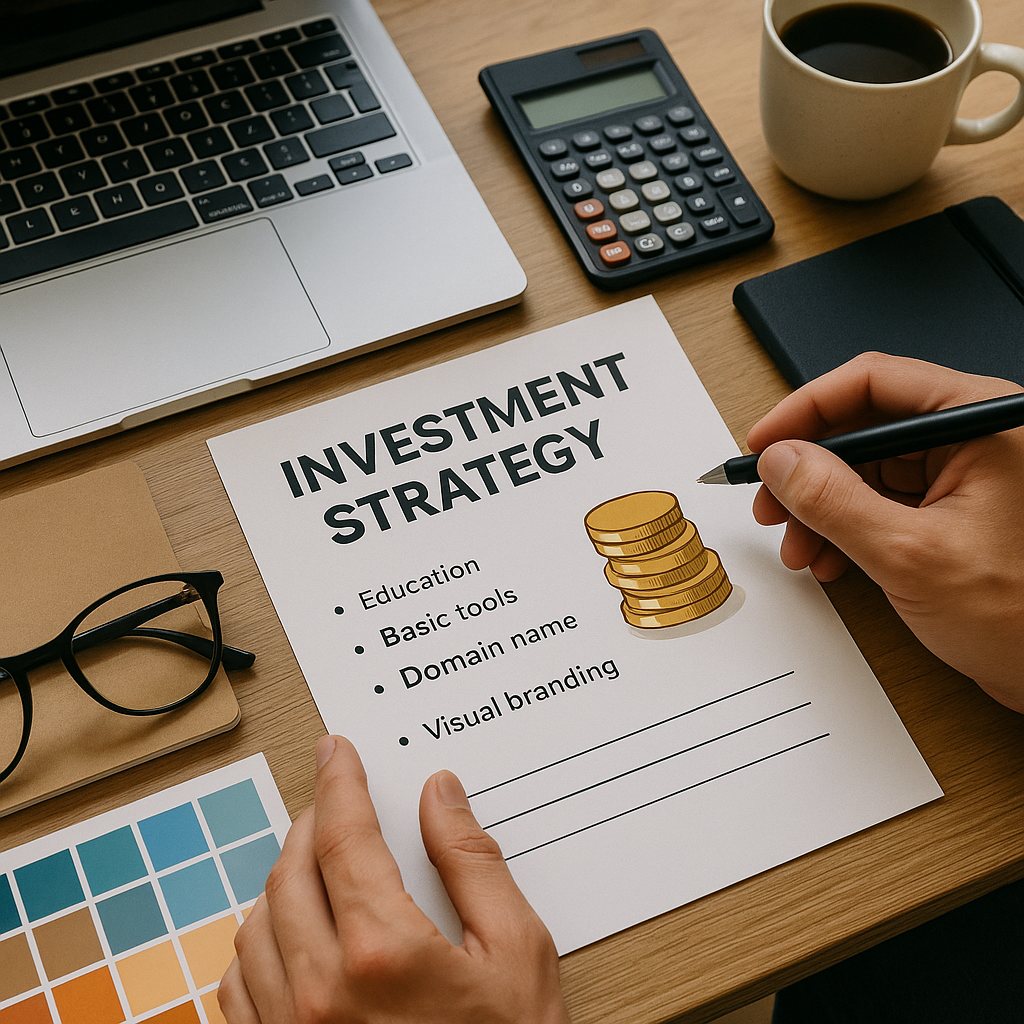Starting your business while still employed gives you the advantage of financial stability. But when you begin earning or saving a bit, the question becomes: where should you invest first?
This article breaks down the smartest early-stage investments to make—so you can grow your business sustainably, without wasting money on things you don’t need yet.
Why You Should Invest Gradually
Your first investments should focus on:
✅ Increasing efficiency
✅ Improving credibility
✅ Accelerating learning
✅ Supporting revenue growth
They should not be about:
❌ Fancy tools you don’t use
❌ Branding before results
❌ Competing with people 10 steps ahead
Let’s break it down by priority.
1. Education That Solves Immediate Problems
Don’t just buy courses for inspiration. Invest in:
- A copywriting course if you struggle with writing
- A niche-specific workshop if you’re unclear on your offer
- A business coach to help you define and validate your idea
🎯 Rule: Invest in learning that leads to action right now, not someday.
2. Basic Tools That Save Time
Start lean with tools that reduce friction:
- Canva Pro: For quick, professional visuals
- Notion or Trello: For organizing content and tasks
- Calendly: To schedule client calls without back-and-forth
- Google Workspace: For branded email and cloud storage
💡 Total cost: under $40/month—and worth every cent when used intentionally.
3. Your Own Domain Name and Email
Even if you don’t build a full website right away, having a professional email and domain:
- Builds trust
- Makes you look serious
- Gives you future flexibility
🌐 Example:
Instead of yourbusiness@gmail.com → hello@yourbusiness.com
Cost: ~$10/year for domain + optional $6/month for email via Google Workspace.
4. Visual Branding Essentials (Simple but Consistent)
Don’t pay for full brand design at the start.
Instead:
- Choose 2–3 colors
- Pick 1–2 fonts
- Use Canva to create templates
- Create a simple logo (or use your name)
✨ Keep it clean and consistent—it’s enough in the beginning.
5. A Simple Landing Page or Portfolio
You don’t need a complex website. One page that clearly explains:
- Who you help
- What you offer
- Why it works
- How to contact or buy
Tools:
- Carrd (cheap and fast)
- Notion page
- About.me
- Gumroad (for digital offers)
💸 Cost: Free to ~$20/year
6. A Basic Payment System
Make it easy to get paid. Use:
- PayPal
- Stripe
- Mercado Pago
- PicPay or Pix (Brazil)
- Gumroad or Hotmart (for digital products)
💡 Pro tip: Test your checkout as a client to avoid surprises.
7. Help That Saves You Time
If budget allows, hire help for things that drain you or block you from growing.
Examples:
- Virtual assistant for email and scheduling
- Designer to polish your templates
- Editor to speed up content production
Even hiring someone for 2 hours a month can create space for high-value work.
8. Marketing and Promotion (Later, Not First)
Avoid running ads right away unless:
- You have a proven offer
- You’ve made at least a few organic sales
- You understand your audience deeply
Until then, invest in organic visibility—content, conversations, networking.
Final Thoughts: Invest Like a Lean Founder
Every dollar should move your business forward—not just make it look nice.
✅ Start with education and tools that help you act
✅ Avoid vanity expenses
✅ Upgrade only when the basics are working
You don’t need to “look like” a business.
You need to solve problems and build momentum.
That’s where smart investment begins.



Deixe um comentário